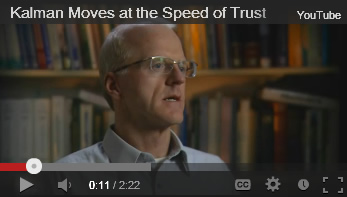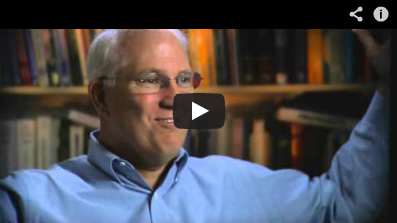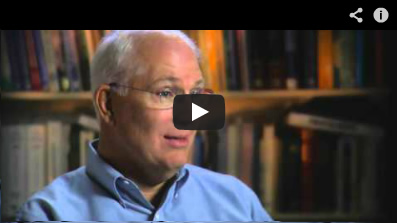
The Value of Working with a Kalman Sales Engineer Versus One Of Our Competitor’s Estimators.
Estimators put prices on plans. Sales engineers look for the best solution.
Innovative solutions and customer support is the difference between a sales engineer and an estimator.
Engineering is about solving problems. Estimating is about pricing
Paul Kalman, who founded the company in 1916, was working in a steel mill where the floors were wearing through annually. He sat down and figured out how to make concrete more durable by removing excess water in concrete after it has been placed. His ingenious Absorption Process® became the industry standard for abrasion-resistant industrial flooring.
“That is the spark that ignited the creation of Kalman Floor Company and it is the problem-solving ideal that all of us pursue today because we are continually striving to deliver a superior product like Paul Kalman did in 1916,” states Carl Ytterberg, Kalman’s Chief Executive Officer (CEO). “Paul was our first sales engineer.”
Solving problems
Kalman Sales Manager is proud of the many solutions provided by his team.
“Here’s an example of how one of our sales engineers solved a high-cost problem in a waste disposal facility. The traditional spec for their tipping floors was for 14-inch thick concrete and they considered it disposable. Every time they pushed garbage across the floor, using tracked vehicles, it scraped off concrete.
“Our sales engineer talked to them about our Absorption Process® topping over a Kalman Seamless Concrete® shrinkage-compensating slab. His design reduced the slab to eight inches with a ¾” abrasion-resistant topping. The sale went through. The slab was actually cheaper than what they had been installing.
“At the end of five years they called and said you need to come and replace the floor. We were dismayed. Wow, what have we done wrong? We discovered their standard maintenance schedule called for the floor to be replaced every five years.
“So we measured the floor wear at five years and it was negligible. At 10 years we went back and cored the floor and determined it still did not need replacement. So far they had doubled the life span. And five years later we resurfaced only half of the floor, which should last another 15 years.
“That is an example of solving a big problem and saving a bunch of money,” a sales engineer emphasized.
A sales engineer with Kalman for more than 16 years.
“One thing we do a lot as sales engineers is update budgets for our clients as they are moving through their design stages. We often get a single floor plan early on in a project that’s already been designed and budgeted but they haven’t done a good job of designing the many details of the floor. So we work on the design changes and update the budgets as we go. Sometimes this reduces cost, sometimes not, but we are always explaining the benefits of the design changes.
“Most of my problem solving effort is up front but lately I’ve been really involved on some jobs almost right up until the last day. Even after the job is done unexpected issues come up and we have to find solutions.
“Estimators put prices together on plans that are put in front of them. Sales engineers look for the best solution. Most times the client likes our plan better than the original design.
“Estimators just price out what the drawings show. If a problem develops, their excuse is, well that’s what you showed on the drawings.
“I often ask owners, how can I help you get closer to your budget? I like the exploring solutions with them. I get to call people everyday and just talk about solutions. Then I try and show how much will be saved on maintenance and repairs in day-to-day operations. This is where they begin to realize the amount of payback they are getting which often comes in three to five years. Once they see the savings, they continue the conversation. It’s all about long-term value,” he said.
Customer support is what Kalman Sales Engineer emphasizes.
“I think the thing about being a sales engineer, rather than an estimator, is our clients know they can count on us. They’ve come to just rely on us as a partner. Our business is probably 90 to 95 percent repeat customers whether it’s with the owner or the builder or with the designer. We have 50- and 60-year relationships with the largest firms across many industries.
“Construction is an industry with many issues that come up during the life of these large projects. It’s the nature of the business. People like that fact that we take care of problems. We have the best warranties but, even more important, is our dedication to take care of customers after the job is done. They know that we stand behind our product.
“We do big projects for food manufacturers. One project I just finished was a huge facility in Greeley, Colorado that took a year and a half. That was completely outside the scope of normal projects.
“They required high tolerances on sloped drains — no more than 1/8th of an inch deviation. And the slope could not exceed four inches in 10 feet from the high to the low point. The floor system was what we refer to as ‘cut up’ — many rooms, various departments and various openings in the floor. Some areas required special substrate for acid-resistant brick.
“They knew the joints would be their number one problem. That’s true for all our customers. They want the number of joints reduced in any facility.
“We made some design suggestions that allowed us to span four drain bays and put the joints on the high point. This eliminated the number of joints going across the drain bays. It was thinking outside the box and the owner was very, very happy,” he said.
Aaron Comer, Kalman Sales Engineer for the East Coast.
“We did a job in Maryland that had a very tight schedule and I knew that going in. A tropical storm came blowing in right in the middle of the job but the end date didn’t change.
“The job had to be built in pieces. Some of the freezer floors had to be built before the rest of the building was even started. Lots of coordination. Lots of involvement with me and the team members to solve these kinds of issues. It’s not just like wearing a single hat as just the sales engineer. The job was a success and came in on time thanks to the wonderful work of our team on site,” Comer said.
Innovative solutions and customer support is the difference between a sales engineer and an estimator.
“At the front end we are going to be looking for solutions to the problems that they might have or have had in the past. We want to inform them of the issues we see and avoid them ahead of time. We are willing to work overtime to solve these issues,” explains Carl Ytterberg.
“During the bid process, the client is going to gets lots more information about the product from our sales engineers than they would from say a contractor’s estimator. We can discuss service, performance and the specifics of what we do differently — information that new owners, or their engineers, may not have had as much experience with as we have.
“They may not have access to all the information they want in order to determine what floor system is going to make the most sense. They can rely on that from our sales engineers because we are prepared with a lot of information to help with the owner’s decision-making process.
“Our innovations are appreciated by the design engineer as well as the owner. The engineers are pleased that they can hand a structural design to our sales engineers and then get specific details for the concrete.
“Relying on Kalman Floor Company for detailing the floor also allows them to turn over the risk of the construction and the performance of the floor system, to one firm and get an end result that will help them promote their firm and get the next project with an owner.
It’s a great partnership where the design-build engineer has solved the details such as compressive strength, flexural strength and slab thickness and can then turn over the footprint to Kalman and ask us to cure all the other elements of the design which are all the connections to columns, walls, construction logistics, such as snow and rain and deliver a floor that the owner’s going to want to buy again.
“If the floor speaks of quality to the owner, that reflects on the design-builder as well,” Ytterberg said.
Another example of a Kalman innovation
“In about 1995 we determined that shrinkage compensating floors should not be placed directly on dirt. They should be placed on slip sheets and we started doing that flying in the face of conventional wisdom that you should not place concrete on plastic sheets because it causes curling.
“Shrinkage compensating concrete expands more at the top of the slab than at the bottom. The curling effect went away in our tests so placing slabs on plastic turned out to be a great idea. With these frictional forces resolved by using slip sheets, the rebar assumptions were wrong. The general industry standards became incorrect because the stresses changed. Reognizing this was true, Kalman invented and patented, something called the Tension Ring™ in 2003 and Kal-Mat™_about 10 years later.
“These systems eliminate about 30 percent of the rebar that would normally be required by industry standards. The steel is removed in the parts of the slab where there are very, very low stresses, which is the center mass of the slab. Coincidentally, we got the patent and took the Tension Ring™ to market right before the price of rebar doubled and then tripled.
So it was a very early and fast-adopted innovation. It saved the floor owners tens of thousands of dollars. It’s been proven to be tremendously effective and we have today installed more than 10 million square feet of that system.
Carl Ytterberg: “The owner’s cost is our cost.”
“If we can make our cost lower in terms of installation and long-term maintenance that is going to pay off for owners and for us. We have chosen systems and approaches to construction that deliver on those issues of long-term durability and low maintenance. Owners perceive that as a real value. Long-term warranties cost us money so we want to install very low maintenance products to begin with.
“So we take several steps. We employ really high-quality people. We do a lot of preliminary testing. We are serious about the materials that go into our products and we are very serious minded about the installation practices.
“During the bid process owners don’t always see the economic payback. Many companies, especially the large distributors, are organized along departmental lines — engineering team, facilities team, financial team and the operations guy who runs the facility. Very often the operations guy is not at the table with the engineering team or the people who give capital approval aren’t getting input from the operations people who maintain the facilities.
“So Kalman’s price is often higher on bid day that our competitors’. The job of our sales engineers is to show them how to pay for the extra. The payback comes from savings related to maintenance on the floor and the vehicle fleet.
“When you consider those long-term maintenance costs, there is no question that they are saving money for years with their Kalman Floor,” Ytterberg said.
Quantifying the payback.
“Let’s say you build 100,000 square feet and the normal cost is $3.50 a square foot for a standard contractor-grade install.” Ytterberg continued. “Let’s say the premium to install a Kalman floor is $1, so $4.50 a square foot. That’s a $100,000 increase in the cost of construction.
“But if in the cost of operating on the floor we save the owner 25 cents a square foot for 30 years, the math gets pretty easy. 25 cents times 100,000 is $25,000 times 30 years and you are saving $750,000 — if you are willing to look over the long view for the life of the facility.
“We have stories of floors in service way longer than 30 years and relationships with those owners for 50 and 60 years.
A Sales Engineer:“Pride permeates this company.”
“We are not the biggest company and that has not been the prime mover. But we’ve always wanted to be the best.
“There is a tremendous loyalty to our customers and that is reciprocal. Nobody owns caring relationships. They just exist. They’ve been forged over four generations.
“It seems to transcend the turnover in management during all the buyouts and changes in the industry. Staff , who worked for one of our customers, now work for different companies and still request us. ‘We want you on our next project,’ they tell me. I am confident that our warranty doesn’t matter as much as the lifetime relationship.











